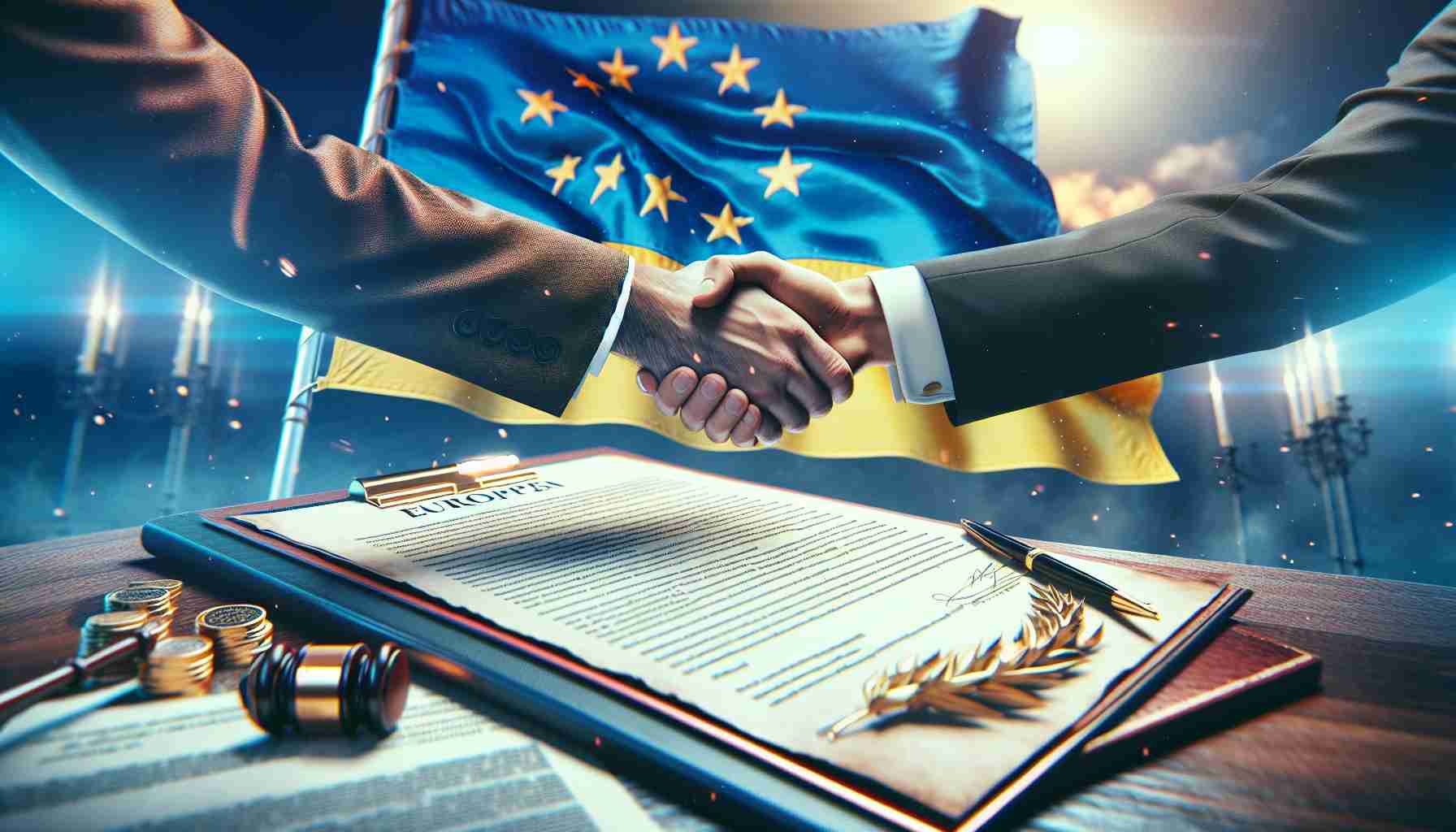- The EU committed to speeding up Ukraine’s accession process during the Munich Security Conference.
- EU leaders António Costa and Ursula von der Leyen pledged support to Volodymyr Zelenskiy, emphasizing solidarity.
- Geopolitical tensions increased after a call between Donald Trump and Vladimir Putin, challenging NATO alliances.
- The EU’s promise to Ukraine signifies a strategic maneuver amid international diplomatic complexities.
- The conference highlighted Europe’s dedication to Ukraine and reinforced its position against global disruptions.
Amid the grandeur of the Munich Security Conference, the European Union took decisive steps towards embracing Ukraine into its fold. Against a backdrop of swirling geopolitical currents, EU leaders, António Costa and Ursula von der Leyen, extended a hand to Volodymyr Zelenskiy, pledging to hasten Ukraine’s accession process. Their commitment underscored a resolute stand amidst turbulent negotiations that unexpectedly surfaced from a call between Donald Trump and Vladimir Putin.
The scene inside the conference halls contrasted sharply with the storm brewing from the East. Discussions of security and solidarity dominated, but the real drama unfolded in hushed corridors, where Ukraine’s dreams of integration collided with renewed threats to European unity. The call between Trump and Putin cast a long shadow, challenging NATO alliances and leaving European leaders scrabbling for cohesive responses.
In this intricate dance, the EU’s vow to Ukraine becomes more than a mere political gesture; it symbolizes a beacon of support and a strategic maneuver at a fraught moment. The commitment to accelerate Ukraine’s entry whispers of solidarity, a reinforcing line drawn in the sand against disruptive forces.
As the world watches, one clear message emerges: the EU intends to stand by Ukraine, speeding its journey into the European family while navigating the choppy waters of international diplomacy. In echoing harmony, Europe reassures Ukraine and fortifies its own resolve in the face of an ever-shifting global landscape.
Ukraine’s EU Accession: What It Means and What’s Next?
How-To Steps & Life Hacks for Understanding EU Accession
1. Understanding Accession Criteria: Familiarize yourself with the Copenhagen Criteria, which outlines political, economic, and legislative standards new EU members must meet.
2. Stay Informed: Follow credible news sources and EU announcements regarding Ukraine’s progress to gain insights into their accession developments.
3. Engage in Discussions: Join forums or groups to discuss potential impacts of Ukraine’s EU membership on the wider geopolitical landscape.
Real-World Use Cases
– Economic Growth: Ukraine’s accession could potentially enhance trade partnerships, improving its economic stability and growth prospects.
– Security: Joining the EU would bolster Ukraine’s security framework through alliances, vital amidst ongoing regional tensions.
Market Forecasts & Industry Trends
The EU’s market integration could lead to significant growth in sectors like agriculture, energy, and technology in Ukraine. Additionally, EU membership typically attracts increased foreign direct investment due to reduced trade barriers and enhanced market access.
Reviews & Comparisons
Comparing Ukraine’s potential EU accession to past new members like Croatia provides insights into the challenges and benefits. Ukraine’s large size and ongoing conflict pose unique challenges not seen with other recent entrants.
Controversies & Limitations
– Geopolitical Tensions: The move could exacerbate tensions with Russia, resulting in geopolitical and security concerns.
– Economic Challenges: Ukraine must undergo substantial reforms to align with EU standards, which may involve significant socio-economic upheaval.
Features, Specs & Pricing
– Features of Membership: Access to the single market, EU structural funds, participation in common policies.
– Costs: Membership fees and uncompromising regulatory standards require economic adjustments, which can be costly in the short term.
Security & Sustainability
Accession to the EU potentially enhances security through collective defense agreements like those quasi to NATO arrangements. Sustainability policies within the EU may help Ukraine improve its environmental practices and policies.
Insights & Predictions
Experts suggest Ukraine’s full integration could take several years, given current challenges. However, the commitment to accelerate the process indicates a strong political will, potentially reducing the timeline.
Tutorials & Compatibility
– Euro Adoption: While not immediate, tutorials on adopting the Euro and integrating into its economic system will eventually become relevant for Ukraine.
– Legal Compatibility: Aligning Ukrainian laws with EU legislation is a complex but necessary step in the accession process.
Pros & Cons Overview
Pros
– Strengthened geopolitical position.
– Economic growth and access to large markets.
– Enhanced security and social standards.
Cons
– Risk of increased regional conflict.
– Substantial economic and legislative reforms required.
– Possible short-term economic costs.
Actionable Recommendations
– For Investors: Consider long-term investments in Ukrainian industries aligned with EU priorities, such as renewable energy and tech innovation.
– For Citizens: Stay informed about changes in legislation that may affect businesses and individual rights as Ukraine transitions towards EU standards.
– For Businesses: Prepare for changes in trade regulations and standards.
In conclusion, while Ukraine’s path to EU membership presents both challenges and opportunities, the commitment from European leaders marks a significant step in strengthening continental ties and enhancing stability. For more information on European Union policies and updates, visit the European Union’s official site.
